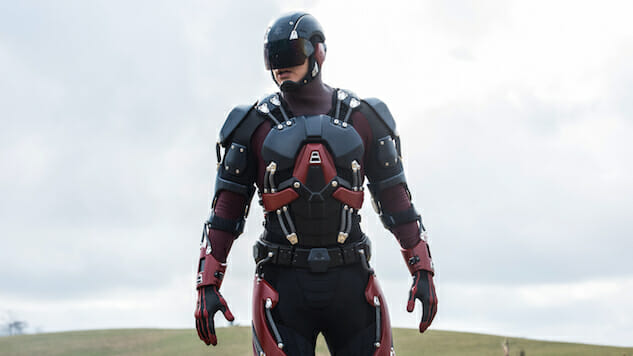How Legends of Tomorrow Became the Most Entertaining Comic Book Show on TV
The CW
The CW’s superhero extravaganza, DC’s Legends of Tomorrow, is probably the goofiest show on television right now. It’s also one of the best. But that wasn’t always the case.
Born out of The CW’s successful Arrow and Flash series, DC’s Legends of Tomorrow was billed as an epic superhero crossover turned into a weekly series. The elevator pitch is pure gold: Superheroes on a time traveling space ship—basically, Doctor Who with a whole lot more punching.
Initially, the series realized that promise with a few positively huge Season One episodes, including an arc that sent the team into the future for a front row seat at the end of the world. But the drama faltered, with bloated two-part episodes that could’ve easily been completed in an hour, and big ideas shuffled away in an act or two. The ideas were there, but not the execution: A romp to the future filled with potential, showing what happens if the heroes fail? Wrapped up in 42 rushed minutes. A by-the-numbers prison break storyline set in a Russian gulag? Stretched, without justification, to two full episodes.
The series’ first year was also hampered by its season-long mission to take out the immortal villain Vandal Savage (Casper Crump), which grew stale after the umpteenth time Savage and the heroes butted heads with no real resolution. It was merely wheel spinning—occasionally fun and silly wheel spinning, but wheel spinning nonetheless. Still, for all its faults, Legends was a ratings hit for The CW, and the network brought it back for a second season—fortunately for us. The creative team worked out the kinks and then some.
Here are the four ways DC’s Legends of Tomorrow became the best comic book show on TV:
1. Mixing up the team dynamics
Season Two shook up the cast just enough to create some fresh combinations, adding Maisie Richardson-Sellers’ Amaya and Nick Zano’s Nate to the existing roster. Then, they actually gave the original team members some juicy character arcs. Sara (Caity Lotz) took over the team as its new leader, while Ray Palmer (Brandon Routh) grappled with who he is outside of his Iron Man-esque super suit. Sure, that plot line borrowed from Tony Stark in Iron Man 3, but it worked. Even Victor Garber’s exposition-spouting Martin Stein was given an adult daughter thanks to some time travel shenanigans, which finally found the stuffy scientist at the center of a story with heart.
The biggest change, and arguably the best, was Sara’s promotion to captain—making Legends one of the few comic book shows (alongside Supergirl and Jessica Jones) to put a woman in the lead role. Lotz seemed to relish the challenge, as the season charted her character’s growth and maturity, learning to lead and make decisions that affected more than just herself. That came to a head in Tuesday night’s finale, in which Sara (literally) rises to the occasion to save all of reality, bringing her story full circle. Not bad for a reformed assassin, right? Much of the season may have been framed around the quest to rescue original team leader Rip Hunter (Doctor Who alum Arthur Darvill), but it took leaving the team without a leader for Legends to find its footing.
-

-

-

-

-

-

-

-

-

-

-

-

-

-

-

-

-

-

-

-

-

-

-

-

-

-

-

-

-

-

-

-

-

-

-

-

-

-

-

-








































